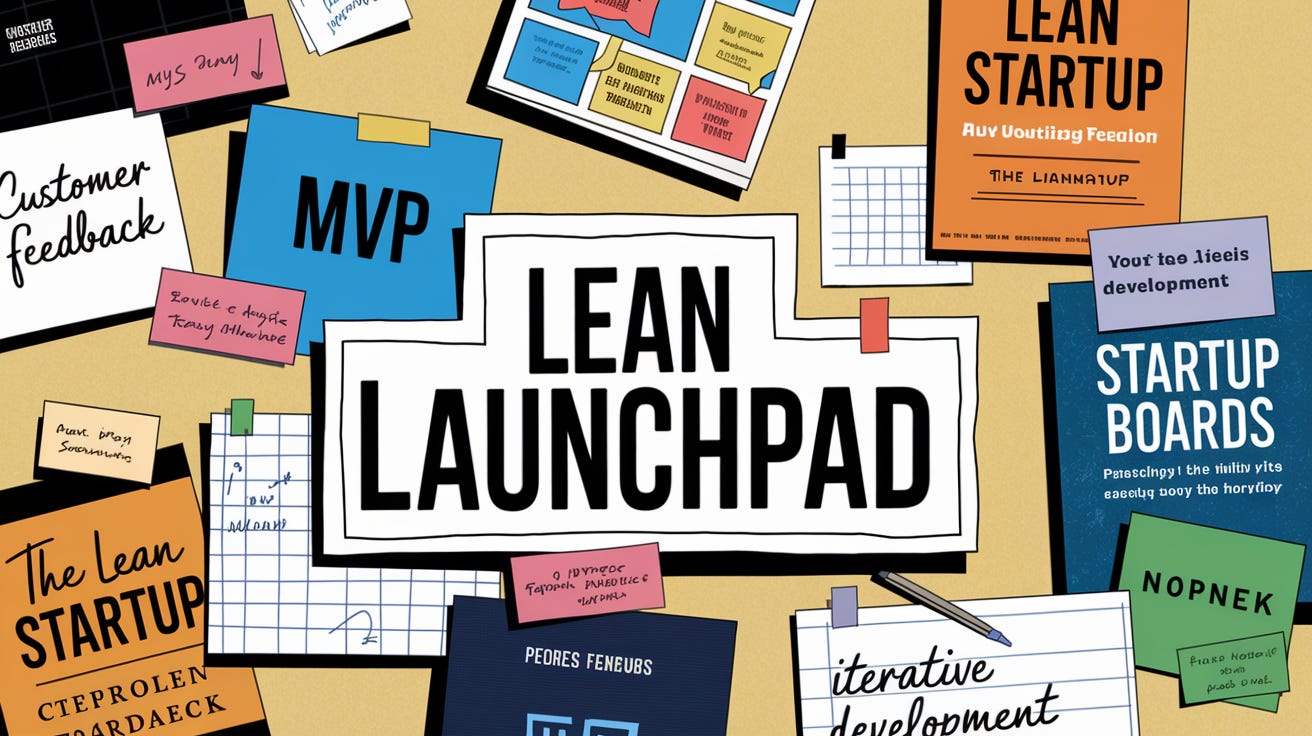Avoid the Quibi Trap: Lean Startup Lessons from Stanford
Highlights from Lean Launchpad, one of Stanford's most competitive entrepreneurship courses
Every year, hundreds of Stanford students vie for a spot in Lean Launchpad, a School of Engineering course teaching the Lean Startup methodology. Weeks before the deadline, students scramble to form teams and refine business ideas, pitching their proposals in hopes of securing one of the eight available slots. This competitive course, led by entrepreneurship and VC veterans Jeff Epstein, Mar Hershenson, Radhika Malpani, and Sarah Smith, provides invaluable guidance for aspiring founders.
As a former student and current course assistant (alongside Aislin, Anushikha, and Divya), I'm excited to share a 10-week series highlighting key lessons from Lean Launchpad. Follow along for practical tips on building experiments, customer segmentation, channel strategy, pivoting, marketing, and more.
This week, we dove into the crucial first steps: customer development and early business model construction:
Forty-two percent of failed startups created a product nobody wanted. There are four common ways this can happen: teams (1) build for themselves, not the market; (2) build something cool that does not address a market need; (3) build something that showcases an amazing technology but does not have a clear value prop; or (4) conduct customer discovery but fall prey to confirmation bias, not listening to the signals.
The Quibi versus TikTok story illustrates this perfectly. As described by the HBS Review at the time, “NewTV [Quibi] doesn’t plan on testing these hypotheses. With fewer than 10 employees but almost $2 billion dollars in the bank, it plans on jumping right in.” Their bet was wrong, shutting down in 2020 while short-form video platforms like TikTok took off.
So how do startups avoid failure? Becoming a user savant helps. Being a “user savant” means deeply understanding your customer. This understanding can come from personal experience (like Stripe solving its founders' own problem), industry expertise, close relationships with someone experiencing the problem, or extensive market research.
Customer discovery is about uncovering your potential customers’ motivations and pain, not whether they like your product. As The Mom Test warns, people often tell you what you want to hear rather than the truth. If you ask, “Do you think this is a good idea?” they’ll say yes to be supportive. This can be the worst kind of feedback for an entrepreneur: it’s nice but useless. Instead, ask questions even your mom won’t lie about.
Other common mistakes that aspiring entrepreneurs make during customer discovery include talking too much (aim for <20% of the speaking time, using tools like Otter.ai or Read.ai to track), asking leading questions ("Would you use it?"), pitching prematurely, and forgetting to document learnings.
Customer discovery is not about asking people what to build. It's about understanding their motivations. Henry Ford famously said, “If I had asked people what they wanted, they would have said faster horses.” In The Lean Startup, Eric Ries emphasizes a similar approach, “We often talked to them [our customers] and asked for their feedback. But we emphatically did not do what they said. We viewed their input as only one source of information about our product and overall vision.”
Similarly, customer discovery should not be an aimless wander. Before the start of the course, students are asked to formulate a Business Model Canvas, allowing them to describe and design their business model. Customer discovery then becomes a series of experiments to test these assumptions: is it feasible (can it be built and distributed?), desirable (do customers want it?), and viable (will it be profitable?)?
If nothing else, the Lean Startup methodology emphasizes rapid cycles of building, measuring, and learning. To do this, you should build tests to challenge your riskiest assumptions first. With each test, start with a good hypothesis, one that is testable (you can determine true/false clearly), precise (you clearly define who, what, and when), and discrete (you test just one thing). Run experiments to prove or disprove your hypotheses and revise your Business Model Canvas. This iterative process of building, measuring, and learning allows startups to navigate the uncertain path ahead, knowing when to pivot or persevere.
Keep an eye out for next week’s discussion on designing experiments and cold outreach.


